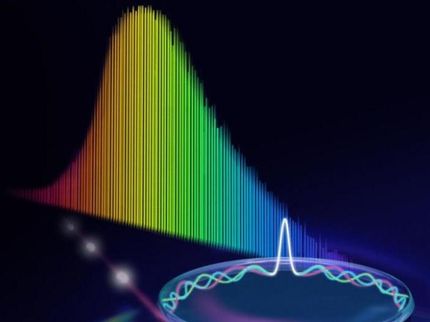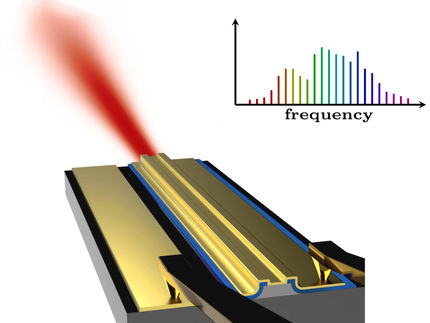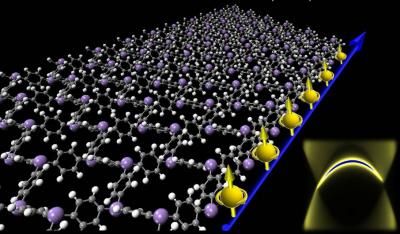Seeing the invisible: A real life Eye of Sauron?
“That’s the idea here: an all-seeing eye that can detect hazardous aerosols against a very crowded background of other substances”
Picture this disaster scenario in the making: At an industrial plant, a pipe cracks, spraying a cloud of tiny droplets into the air. Workers, however, are in luck. Within minutes, a laser-based device the size of a small suitcase spots the cloud and tells safety crews what’s in it so they know how to respond.
That’s the vision behind a new project from a team of engineers and chemists at the University of Colorado Boulder, California Institute of Technology, University of California Santa Barbara, and three companies. It’s funded by a new contract from the Intelligence Advanced Research Projects Activity (IARPA), part of the federal Office of the Director of National Intelligence.
The effort borrows its name, the Standoff Aerosol measUrement Remote Optical Network (SAURON), from the villain in “The Lord of the Rings” book series—a presence who often takes the form of a flaming eye and whose “gaze pierces cloud, shadow, earth.”
“That’s the idea here: an all-seeing eye that can detect hazardous aerosols against a very crowded background of other substances,” said Greg Rieker, professor in the Paul M. Rady Department of Mechanical Engineering and principal investigator for the project.
SAURON, he explained, will zoom in on aerosols, the term for a wide range of tiny particles that float in the air. Some aerosols can contain chemicals that pose serious risks to humans, such as Polycyclic Aromatic Hydrocarbons. Ammonium nitrate, a common ingredient in explosives, also forms aerosols. So can fentanyl, an opioid drug that can be deadly in even small quantities.
To detect such hazards, the team is turning to a Nobel Prize-winning technology called a frequency comb laser. The researchers hope their devices could, in the not-so-distant future, help protect people from a range of airborne threats, including industrial accidents and even potential chemical attacks in crowded cities.
“The lasers will run off of batteries, so you can deploy them at an airport, on city blocks or in industrial sites where they use hazardous materials,” said Scott Diddams, professor in the Department of Electrical, Computer & Energy Engineering. “Right off the bat, people would know if there was a failure or a leak.”
CU Boulder co-principal investigators on the project include Diddams, Daven Henze, professor of mechanical engineering, and Jose Jimenez, professor of chemistry and fellow at the Cooperative Institute for Research in Environmental Sciences (CIRES).
Seeing the invisible
Spotting dangerous aerosols is, in many ways, the ultimate “needle in a haystack” task. The air people breathe is a lot more complicated than it looks.
“At any time in the atmosphere, methane and carbon dioxide are present, and other examples of what we call volatile organic compounds,” Rieker said. “There is a lot of clutter.”
The team believes that frequency comb lasers may be able to help sort through that clutter.
Diddams was among the members of a team at JILA, a joint research institute between CU Boulder and the National Institute of Standards and Technology (JILA), that pioneered these tools. The group, led by Nobel Laureate Jan Hall, used frequency comb lasers for research in quantum metrology and optical clocks. Unlike traditional lasers, frequency comb lasers shoot out a beam of light with millions of colors, all at the same time.
If you beam such light through an environment, these lasers can act like a fingerprint scanner for aerosols—teasing out the signals from even minute concentrations of particles or gases in the air. The project team includes LongPath Technologies, which uses these tools to search for methane leaks at oil and gas facilities. Rieker co-founded LongPath in 2017.
Over three-and-a-half years, SAURON researchers will work to make their lasers even more sensitive and much more compact. To do that, the group is incorporating new “integrated photonics” technology pioneered by Kerry Vahala at Caltech, John Bowers at UC Santa Barbara and the companies Nexus Photonics and hQphotonics. The team will design its devices on small chips that transmit information not using electronic signals but light beams. The work is part of the Quantum Engineering Initiative at CU boulder.
“They are like traditional silicon computer chips, but with light being generated, moving around and interacting in ways that make it useful for sensing,” Diddams said.
SAURON is an example of researchers at CU Boulder taking advances in fundamental science and transforming them into tangible technologies that could one day safeguard people.
“We’re taking technologies that have been developed for quantum science and are translating them for a wide range of applications,” Rieker said.































































